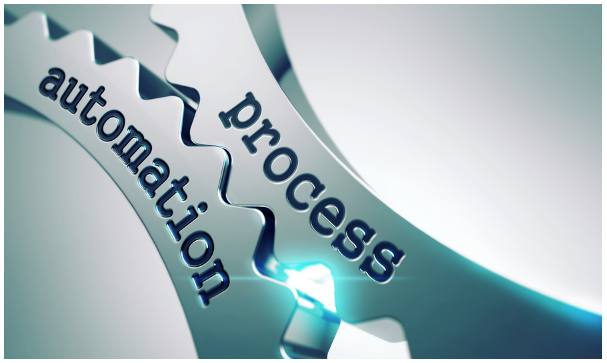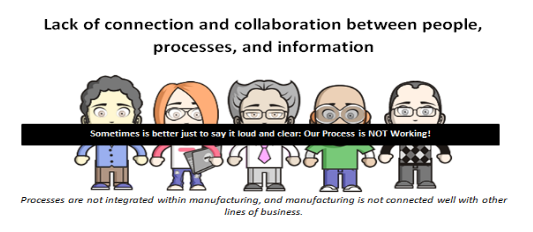
In Part 1 of this essay, I made the case that all businesses should be collecting enough data in order to ensure that manufacturing information(sensors and manually recorded data) can be harvested and used to make better decisions moving forward.
Process Automation is the science we use to control and monitor manufacturing events and it is by fine tuning this process that can yield a company fantastic results.
The goal of manufacturing is to produce a high quality product, get production efficiency up, costs down, all the while maintaining a safe environment. When the manufacturing process is disconnected because one cell in the process cannot take advantage of the data upstream or downstream of where the cell resides, productivity gains erode.

Any data obtained or collected in the manufacturing process that is not stored electronically is essentially ‘dead data’. Dead data is very expensive to a company. The company loses on many fronts.
Examining the cost of data being stored on paper is really quite staggering.
- Creating SOPs, Work Instructions, and data gathering forms
- Issuing paper logbooks and forms to manufacturing areas on a daily or shift-by-shift basis is an overwhelming and extremely human capital intensive process.
- After the forms are issued, data is then recorded on these documents and then….
- Gathered, sorted, scanned, and stored
- Storing becomes a logistical nightmare for most companies and they often have to use third party companies to hold large amounts of data that can never be aggregated.
The data is dead. Each page is intrinsic and at most worthy of itself. It cannot however be aggregated and compared to its other paper brothers and sisters without an extremely manual effort of moving it to electronic format after the fact.
Digital or Electronic data is the goal……the data is alive and can be used today or anytime in the future. If we store everything we do within a company, the world opens up on so many fronts on what may be exposed or uncovered. A few examples of what is available follows.
Descriptive Analytics - When data and information is stored on paper, the company losses the ability to look back in history very quickly in order to identity artifacts from the past. The data can be of little or no use because computational methods to understand the data are not capable in a non-digital format. In electronic format, company data is at least descriptive of the past.
Predictive Analytics - By storing information of a ‘defined-repeatable’ process, a company now has the ability to digitally recall a manufacturing process that happened in the past very quickly. Data can be examined with Business Intelligence (BI) tools and as well as Excel. With this past data, future production runs can be examined to see if certain patterns or events repeat based on the different inputs to any given process. Crew, time of day, time of year, raw material supplier, manufacturing facility, etc…...the list can go on and on. With this information, we can ‘tune-in’ higher yields based on the predictive results. Artificial Intelligence tools are moving into mainstream. You don’t need a doctorate in mathematics to take advantage of these business tools. Using proven forecasting methods are at your fingertips without a lot of capital outlay.
Review on Exception - If all the data captured during a given process is alive, we have the ability to put controls around that data, electronically, in real-time. If that is true, then alarms can be sent to the process managers and supervisors when something is out of alignment or drifts outside of an acceptable range. ‘Review on Exception’ is possible because ALL data is digital.
If your data is not digital, then someone most likely has to review every single page to examine it for irregularities. Every page. Every day. Every time something is recorded on paper. Think labor intensive and expensive in both time and money.
In the first part of this essay I promised some examples of how a company can move forward and how to get away from data that is not available for future use. Let’s look at some of those technologies:
Enterprise Software at the Business Level - The good news here is that there are many Enterprise and Cloud Software companies that allow for the tracking of all things digital. These business enterprise systems are ideal for warehouse goods and shop order tracking.
- Manufacturing Execution Systems at the Production Level - At minimum we need to take our paper based data instruction and recording systems and get them into a database. Storing this data in a central location is also key. Simply recording data into an Excel worksheet is not ideal in that the data may not be shared correctly within a company. There are vendors that specialize in Web Forms based data management systems to help companies do this. These system get closer to a ‘No Code’ setup every year. Check them out. You don’t need HTML and database experts to enjoy the benefits of software mediated manufacturing. The tools are ready for you now.
- Sensor and Recipe data storage - Using TCP/IP Network technologies like OPC and OPCUA that allow for the recording of sensor data during the manufacturing process is a critical component for batch record and for alarming and excursion purposes. This will get a company on the path to ‘Review on Exception’.
- Have the ability to ‘aggregate’ the data from the entire supply and manufacturing chain should be a goal. It will allow for production supervisors and managers to see the entire material and manufacturing flow. If Industry 4.0 is a goal of manufacturers today, having a ‘digital’ twin of all the pieces in our processes is a must.
If we have success capturing or data, we are off to a good start in creating our crystal ball to help us look into the future. As a member of any company, we should strive to find that perfect blend of ‘man’ and ‘machine’ that allow for a complete digital representation of what we do each and every day at the companies we work for.
In the next article “Analyze your Manufacturing data!” - will discuss the technologies that allow companies of all size to get data to work for them. We will first look at ‘present’ day benefits of a full electronic system and then we will explore the benefits of what some very simple machine learning technologies may do for us!
Remember…...start small…..finish big!
